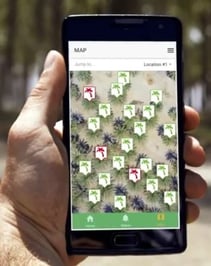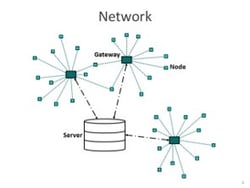One of the most common disease of palms is Red palm weevil (RPW, Rynchophorus Ferrugineus), which is one of the world’s major invasive pest species and is the single most destructive pest of some 40 palm species worldwide (e.g., date palm, coconut palm, and royal palm). The RPW pest was reported in Asia, Australia, Philippines, and Thailand as early as 1962. Since then, its expansion has covered near all countries in Asia, Middle East and the Mediterranean Rim. Recently, the RPW pest has also been reported in different areas of the American continent, being currently considered as a global pest.
The most challenging problem is that RPW is extremely difficult to detect in the early stages of an infestation because there are few externally-visible signs that the pest has taken over a tree: around 80 percent of the pest's life-cycle is hidden from view. For extremely tall species, an infestation in the crown of the tree is even harder to detect. Once an infestation has taken hold it is too late to save the tree.
Therefore, only the use of advanced technology and IoT are really effective methods to save the palms. In addition to the development of efficient early detection mechanism is a critical element of RPW pest management systems
What are the symptoms of RBW?
RPW may exhibit the following symptoms:
- Presence of tunnels on the trunk or base of fronds.
- Infested palms may emit "gnawing" sounds caused by larvae feeding inside.
- Oozing of viscous fluids from tunnels.
- Appearance of chewed plant material at the external entrances of feeding tunnels and a highly distinctive "fermented" odor.
- Empty pupal cases and the bodies of dead adult RPW in and around heavily infested palms, and breaking of the trunk, or toppling of the palm crown.
-
Breaking of the trunk, or toppling of the palm crown.
How IoT presented the ultimate solution for RBW problem?
 |
|
Sensors are installed in each tree to record, memorize the acoustic behavior and analyzes data to find patterns and signs of Pests’ activity. Then they filter out the background noise and can also detect larvae as small as 1 cm long.
The accuracy of detection is 95%
- Larvae produce sounds and vibration as they move and feed within the tree trunk.
- The sensor seeks to provide a system and method for detecting and protecting palms against pests including parasites and beetles.
- The microphone installed inside the palm, detects and monitors each pest’s unique signature vibrations and disregards sampled background noise signals.
The Key Benefits of IoT in in the palm Infection Control:
- Tree Saving:
The solution allows early detection and treatment of the tree before it collapses. - Effective and Efficient Treatment:
Real time monitoring and alert system gives you a better view of your farm; infected trees, pests’ activity, constant and real time treatment follow up, enhancing the effectiveness of pesticides application. - Reduce Costs:
Prevent the loss of trees, Optimize pesticides’ usage & fertilizers’ needs, Decreasing manpower and continuous physical monitoring. - Increase profit:
Effective treatment and fertigation leads to increased yield and better profits.
- To learn more about IoT read this blog
What is Internet of Things? - Need IoT solution for your Palm ?
Ask about Arkan free solution design services.



